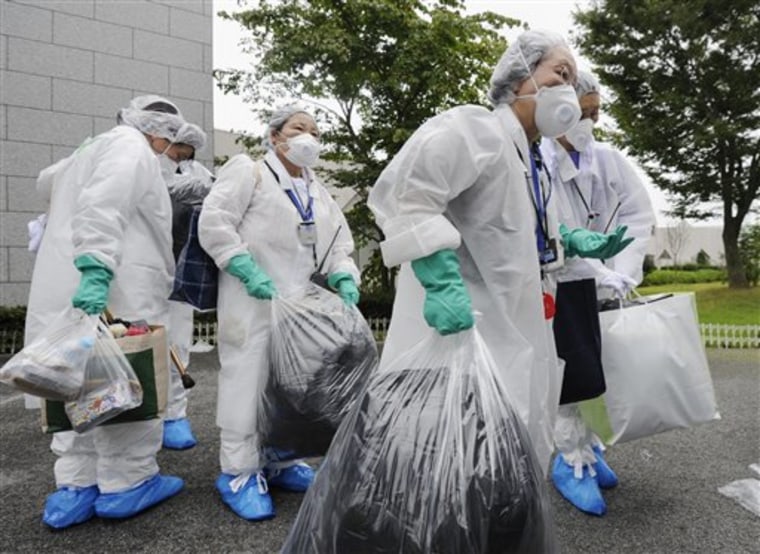Areas surrounding Japan's crippled Fukushima nuclear plant could remain uninhabitable for decades due to high radiation, the government warned on Saturday as it struggled to clean up after the world's worst nuclear disaster since Chernobyl.
Japan faces the daunting task of decontaminating large areas of land around the Fukushima Daiichi nuclear complex, which is still leaking low levels of radiation nearly six months after an earthquake and tsunami triggered a nuclear meltdown.
In a meeting with local officials on Saturday, the government estimated it could take more than 20 years before residents could safely return to areas with current radiation readings of 200 millisieverts per year, and a decade for areas at 100 millisieverts per year.
The estimates, which merely confirm what many experts have been saying for months, are based on the natural decline of radiation over time and do not account for the impact of decontamination steps such as removing affected soil.
A vast area is still uninhabitable around the Chernobyl plant 25 years after that disaster.
The Japanese government unveiled guidelines this week with the aim of halving radiation in problem areas in two years, but for spots with very high readings it could take much longer to reach safe levels.
"I can't deny the possibility that it could be a long time before people can return to and live in regions with high radiation levels," outgoing Prime Minister Naoto Kan was quoted by domestic media as telling Fukushima Governor Yuhei Sato.
Japan has banned people from entering within 12 miles of the Fukushima plant, located 240 km northeast of Tokyo. Around 80,000 people have been evacuated since the March 11 quake and tsunami and many are living in shelters or temporary homes.
On Friday, about 30 residents from the immediate neighborhood of the plant were allowed to briefly return home to get clothes and other necessities they left early in the crisis.
The government's announcement follows the release of data this week showing radiation readings in 35 spots in the evacuation zone above the 20 millisieverts per year level deemed safe by the government. The highest reading was 508 millisieverts in the town of Okuma, about 3 km from the nuclear plant.
Kan, who resigned on Friday as leader of the ruling Democratic Party of Japan amid intense criticism of his handling of the nuclear crisis, also told Sato that the government planned to build a temporary storage facility in Fukushima for radioactive waste.
The amount of radioactive cesium that has leaked from a tsunami-hit nuclear plant is about equal to 168 of the atomic bombs dropped on Hiroshima at the end of World War II, Japan's nuclear agency said Friday.
The Nuclear and Industrial Safety Agency supplied the estimate at a parliamentary panel's request, but it noted a simple comparison between an instantaneous bomb blast and long-term accidental leak is impossible and the results could be "irrelevant."
The accident at the Fukushima plant is likely to have released about 15 percent of the radiation released at Chernobyl in 1986, the agency has estimated.
But that is still more than seven times the amount of radiation produced by Three Mile Island accident in the United States in 1979, and experts have estimated Japan's decontamination efforts could cost as much as $130 billion.
